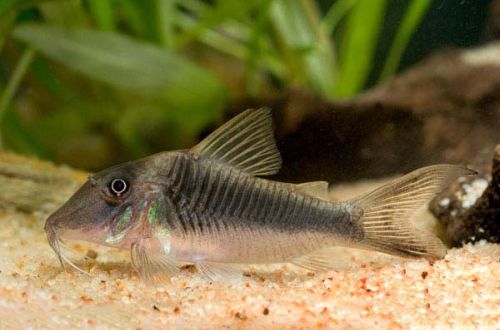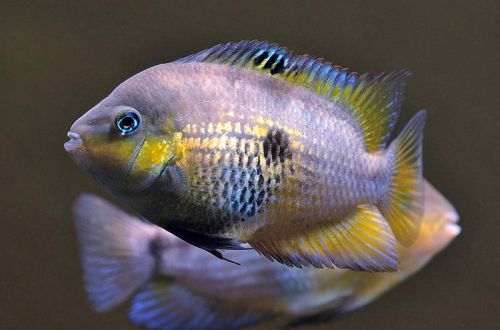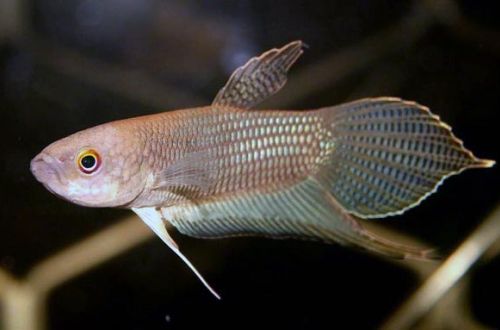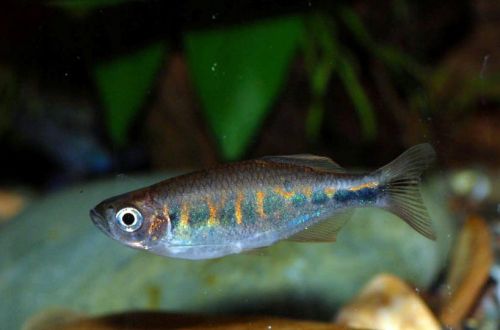
Treitly Corridor
Corydoras treitlii, scientific name Corydoras treitlii, belongs to the family Callichthyidae (Shell catfish). The fish is native to South America from the northeastern regions of Brazil, where it inhabits the lower Amazon basin.

Description
Adult individuals reach a length of about 6 cm. Catfish has a typical body shape for Corydoras – stocky with a high back. The rows of bone plates and sharp spikes, which are the first thickened rays of the fins, protect the fish.
A distinctive feature is a somewhat elongated muzzle. A similar trait is also found in closely related species such as Catfish Cory Acutus, Corydoras flea, and Corydoras semiacuilus.
Outwardly, it looks unremarkable. The main color is dark gray with translucent fins and a light belly.
Behavior and Compatibility
Peaceful accommodating look. Compatible with both representatives of the genus and other non-aggressive fish of a comparable size. Prefers to be in a group of his own kind. A flock of 4 or more catfish is considered optimal. It is worth avoiding being together with territorial benthic species.
Brief information:
- The volume of the aquarium – from 40 liters.
- Temperature – 20-25°C
- Value pH — 6.0–8.0
- Water hardness – soft to hard (2-25 dGH)
- Substrate type – any soft
- Lighting – moderate or bright
- Brackish water – no
- Water movement – light or moderate
- The size of the fish is about 6 cm.
- Food – any sinking food
- Temperament – peaceful
- Keeping in a group of 4-6 fish
Maintenance and care, arrangement of the aquarium
A small group of Traitley Corydoras will feel comfortable in an aquarium from 40-50 liters. In the design, it is recommended to provide places for shelters. The latter can be natural and artificial decoration elements, for example, snags, thickets of plants, etc. He likes to dig in the ground, so the presence of a soft substrate is a prerequisite.
The aquatic environment has wide acceptable ranges. This means that the catfish is able to live both in soft acidic water and in hard slightly alkaline water. Such adaptation significantly reduces costs for long-term maintenance.





